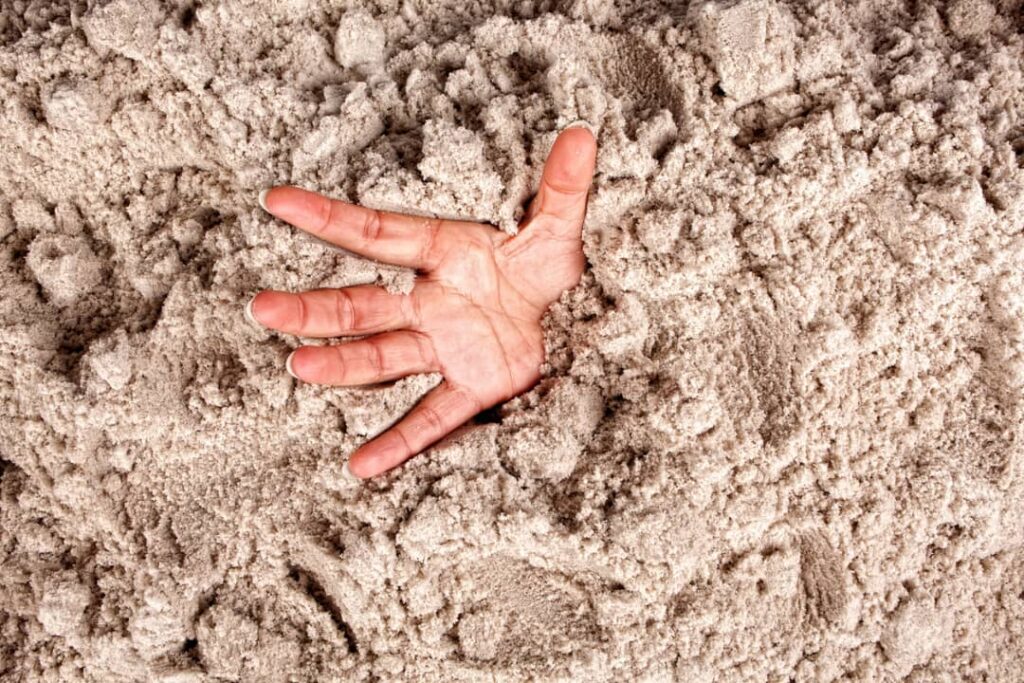
Quicksand once felt like one of the biggest dangers lurking in the world. If you grew up on TV and movies from the ’70s through the ’90s, you probably expected to stumble into it on your way to school or the grocery store. But the truth about quicksand is far less terrifying, and a lot funnier, than we were led to believe.
1. We All Thought It Would Kill Us
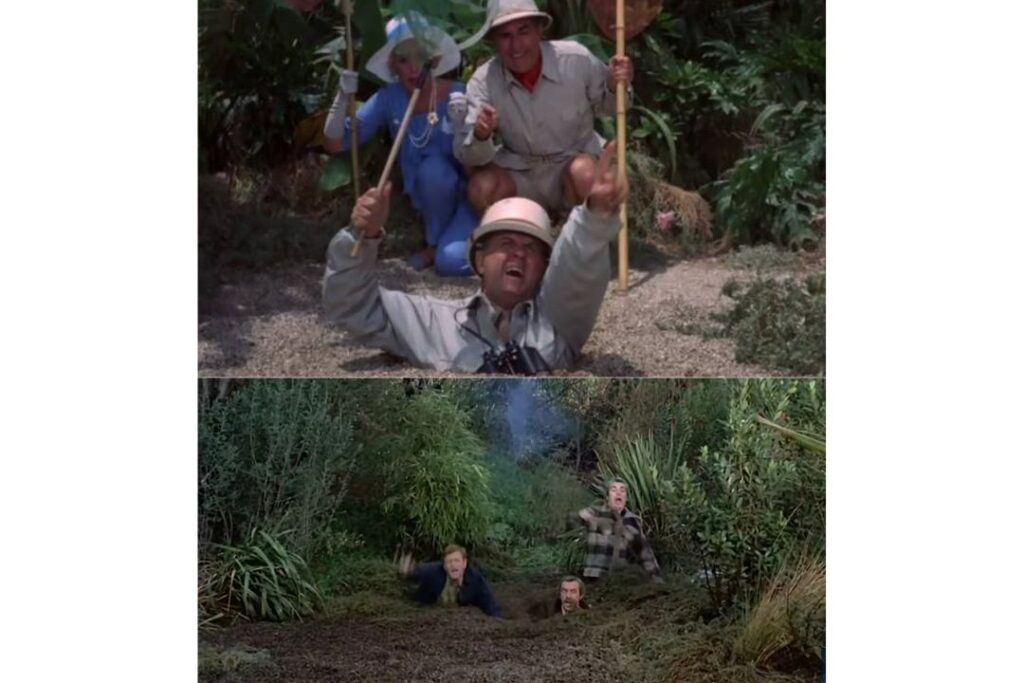
For a whole generation, quicksand seemed like an unavoidable hazard. Movies, sitcoms, and Saturday morning cartoons made it feel like the world was filled with hidden traps, ready to swallow anyone whole. Gilligan’s Island used it so often it became a gag, while action shows like The Six Million Dollar Man played it straight, making it look like a battle between life and death. Kids soaked in these stories and grew up genuinely thinking one wrong step in the woods meant disaster. In reality, quicksand was never lurking behind every tree or beach dune, it was more a storytelling crutch than a real-world threat. But when you’re young and impressionable, those images stick, and the fear felt completely real.
2. The Movies That Made It Legendary
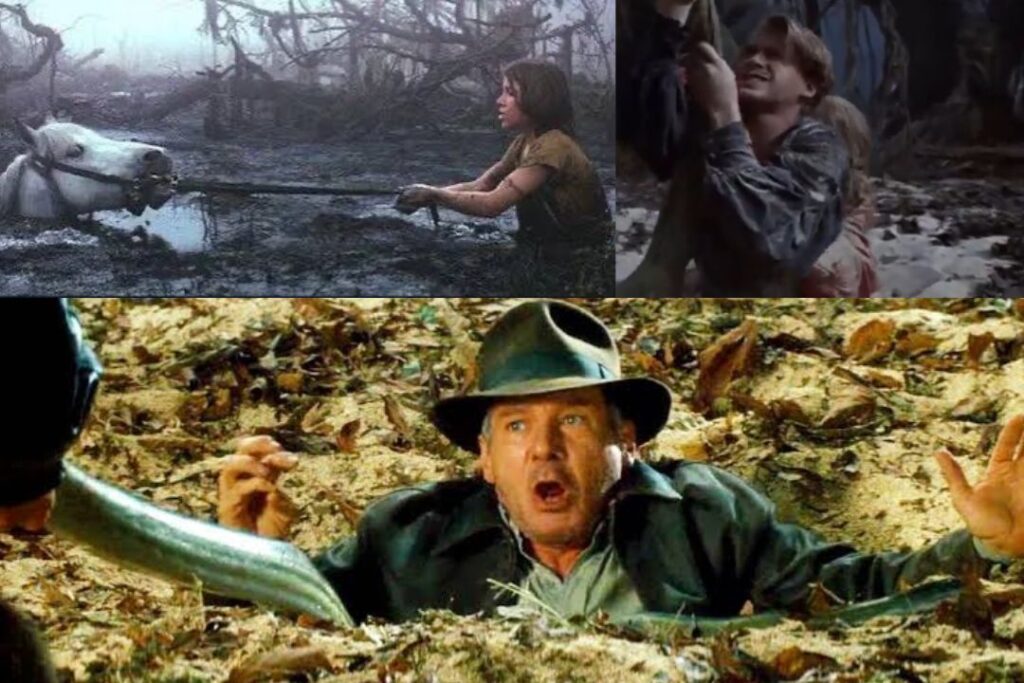
Some of the most unforgettable quicksand moments came straight from Hollywood, where directors couldn’t resist the drama. The Princess Bride gave us “lightning sand,” complete with Wesley diving to rescue Buttercup. The NeverEnding Story made it heartbreaking when Atreyu’s horse Artax was pulled down in the Swamp of Sadness. Comedies also had their fun: Blazing Saddles added a toll booth to the middle of a quicksand pit for laughs. Even Indiana Jones and the Kingdom of the Crystal Skull threw in a reminder that standing still was the key to survival. And for decades before, jungle and Western films relied on it as an easy way to add tension. Hollywood wasn’t showing us nature, it was selling a thrill.
3. What Quicksand Actually Is
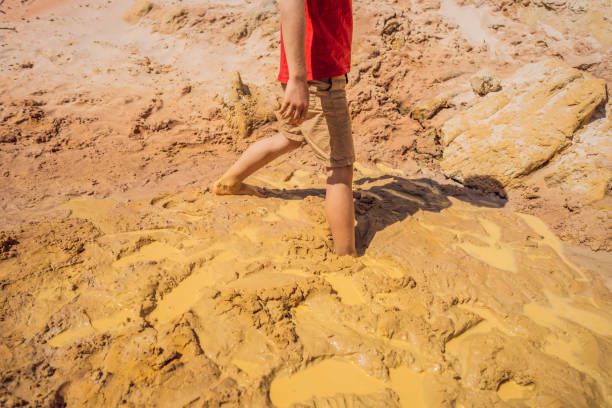
Strip away the drama, and quicksand isn’t so mysterious at all. It forms when sand or silt becomes saturated with water, creating a mixture that looks solid but can’t hold much weight. Step into it, and your foot sinks because the grains are floating loosely instead of locking together. It behaves almost like a liquid, which is why it looks like it’s “swallowing” you. But you’re not going to disappear unless you’ve strapped yourself to something extremely heavy. Scientists explain it as a non-Newtonian fluid, which means the more you struggle, the thicker it feels. That’s why people in movies sink faster when they panic. In real life, it’s messy and inconvenient, but it doesn’t have the power to drag you down like the monster trap it was made out to be.
4. Is It Dangerous? Yes. Deadly? Not Really
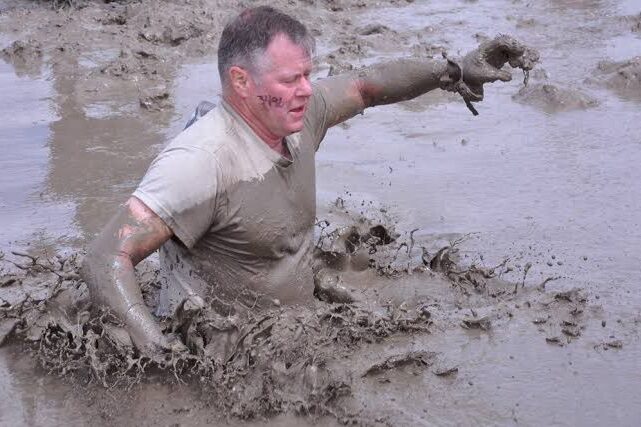
While it’s true quicksand can pose risks, it’s rarely the killer Hollywood portrayed. The worst-case scenario is getting stuck waist-deep and unable to move, which becomes more dangerous only if other conditions pile up, like being alone in a remote place, dealing with cold temperatures, or facing a rising tide nearby. In those cases, the danger doesn’t come from the sand itself but from exposure or drowning if water rushes in. Most people who’ve experienced it describe it as exhausting, not life-threatening. Compare that to actual natural hazards like flooding rivers or storms, and quicksand barely makes the list. It’s more of a frustrating trap than a silent killer waiting to take you under.
5. How to Escape It (No Heroics Required)
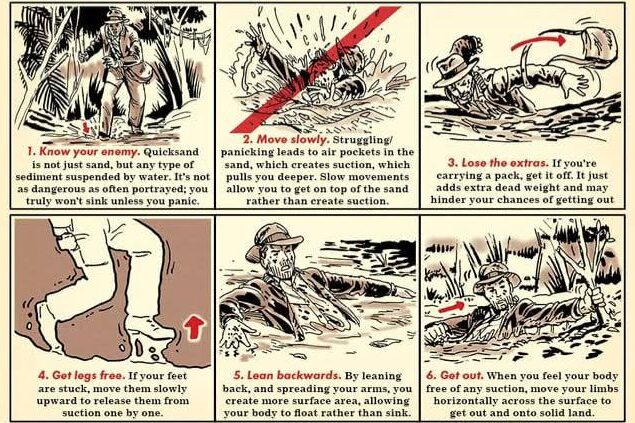
Despite all the dramatic rescues on TV, escaping quicksand doesn’t require superhuman strength or clever tricks, it mostly takes calm patience. Experts recommend resisting the urge to thrash around. Instead, lean back to spread out your weight and let your body float higher in the mixture. Then gently work your legs upward while wiggling, as though you’re swimming rather than climbing. Staying calm actually makes the sand loosen its grip. Many people who panic end up exhausting themselves instead of escaping. In the end, the biggest cost of a quicksand encounter is often nothing more than muddy clothes and a good story to tell afterward, not the life-or-death showdown the movies made it out to be.
6. The Death Toll Is… Kind of Hilarious
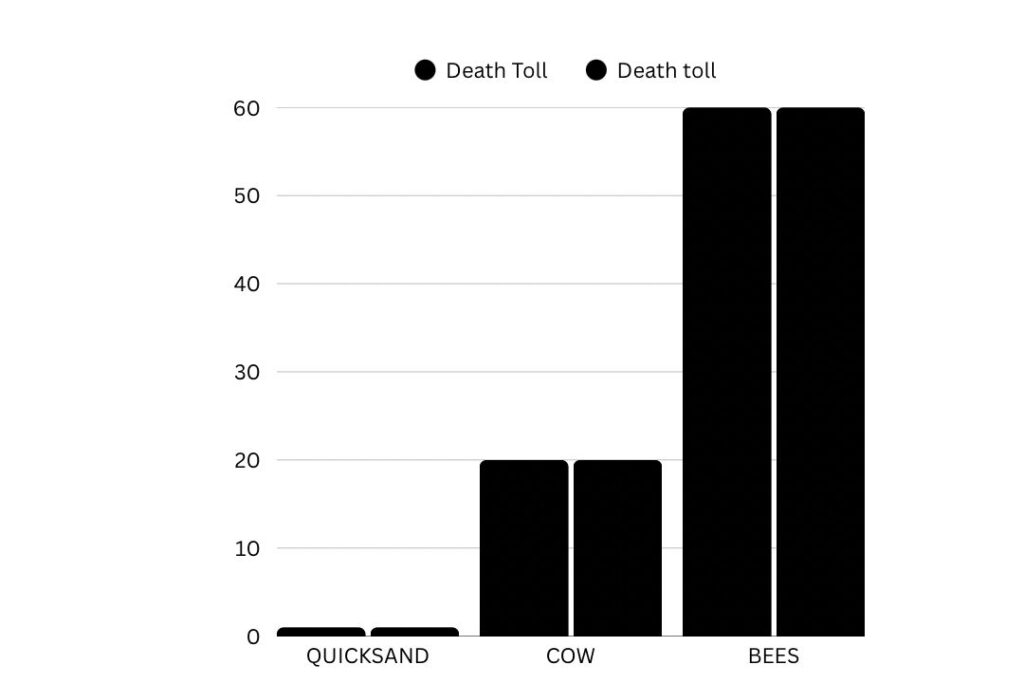
For all the panic it inspired, quicksand has almost no record of killing anyone. Researchers and survival experts point out that official statistics rarely list it as a cause of death, which makes its reputation even funnier. Compare that to bees and hornets, which claim about 60 lives a year in the U.S. alone, or cows, which are responsible for around 20 deaths annually. Even vending machines, toppling over on unlucky snack seekers, cause more fatalities than quicksand. Sharks, one of the most feared creatures on the planet, average about five deaths worldwide each year, still more than quicksand. So while the idea of slowly sinking into the earth made for gripping drama on screen, in real life, quicksand’s body count is basically zero. The scariest thing about it turned out to be the hype.
7. So Why Was It Everywhere?
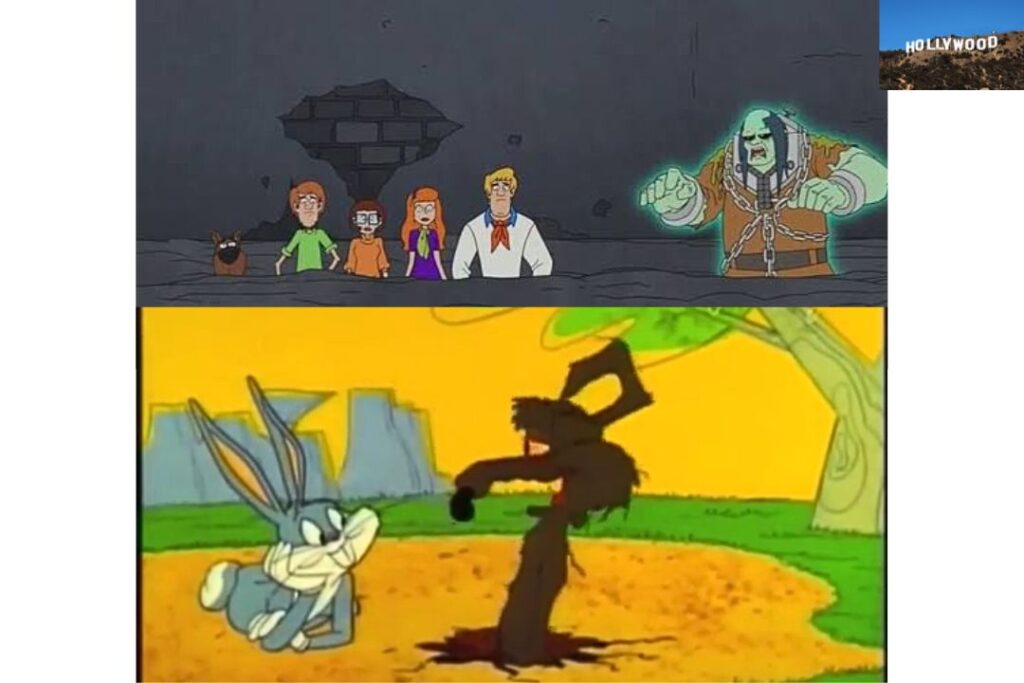
The secret to quicksand’s popularity wasn’t nature, it was Hollywood. For directors, it was a perfect special effect: cheap to stage, easy to understand, and packed with instant tension. Watching someone struggle while sinking symbolized helplessness, which made it a great visual metaphor for any adventure story. In fact, film historians found that during the 1960s, quicksand appeared in nearly one out of every 35 movies, a remarkable trend considering how rare it actually is in real life. By the time Saturday morning cartoons picked it up, it shifted from being scary to being a joke. Kids who saw Bugs Bunny or Scooby-Doo battling quicksand grew up still half-believing it was something they might run into, proving just how powerful repeated imagery can be.
8. The Legacy of a Fake Fear
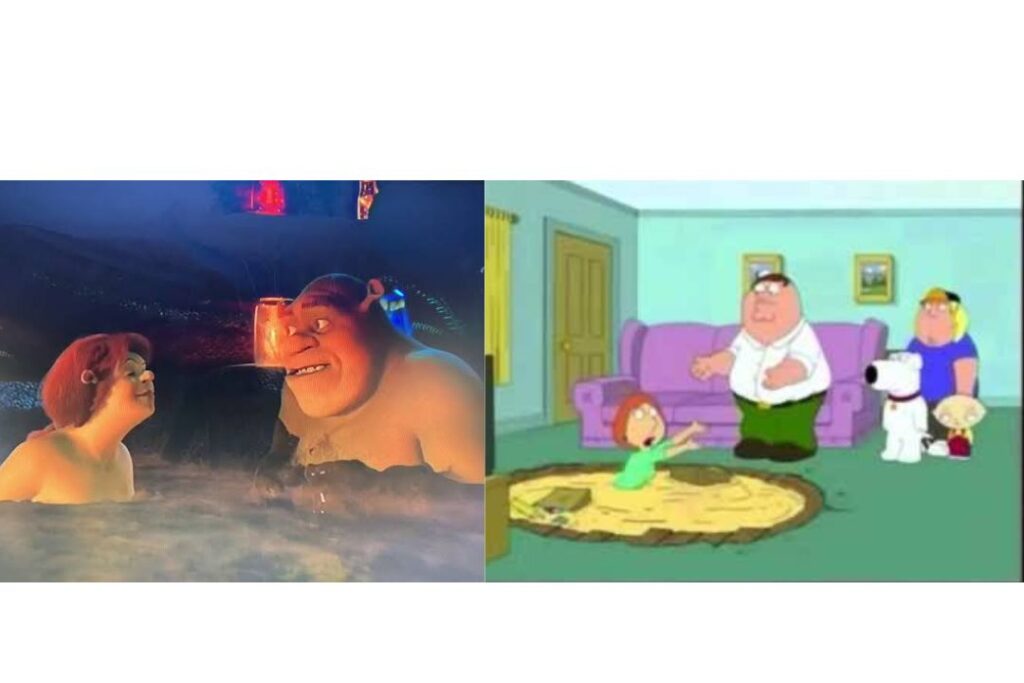
Today, quicksand has more cultural nostalgia than menace. It shows up in parodies on shows like Family Guy, Brooklyn Nine-Nine, and even in animated films like Shrek 2, where it’s played for laughs instead of scares. The once-terrifying scenario has become a wink to the audience, a shared memory of an overblown childhood fear. Many adults now look back and chuckle at how seriously they once believed it could endanger them. In some ways, quicksand became a symbol of how stories shape our fears, even when the science doesn’t back them up. It may not lurk in every forest or desert, but it’s permanently lodged in our imaginations as proof that sometimes the scariest things aren’t real dangers, they’re just great storytelling.
This story Why Was Everyone So Afraid of Quicksand? The Truth Is Funnier Than You Think was first published on Daily FETCH


